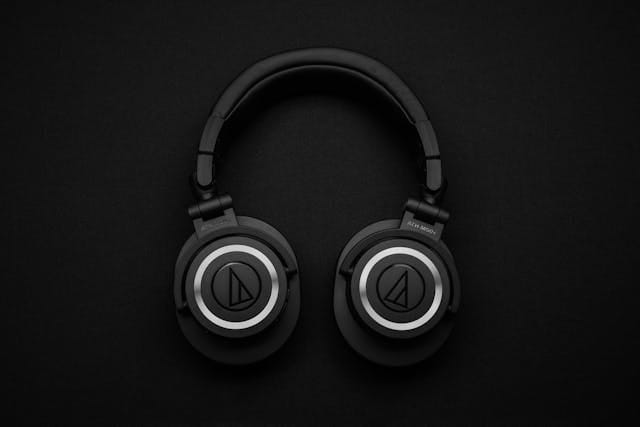In today’s bustling world, noise cancellation technology has become essential for anyone seeking an uninterrupted audio experience. Active and passive noise cancellation represent two major approaches to blocking out unwanted sounds, commonly found in headphones and earbuds. Both types are designed to enhance audio quality and provide a more immersive listening experience, but they work in fundamentally different ways. Choosing between active and passive noise cancellation can be confusing, as each method has unique benefits, limitations, and ideal applications.
The key to understanding the choice lies in knowing how these technologies function, what they offer, and how they differ. Active noise cancellation involves electronic systems that counteract external noise, while passive noise cancellation relies on physical barriers to block sound. Throughout this post, we’ll explore the essential differences, weigh the pros and cons of each type, and discuss the best scenarios for using active and passive noise cancellation in earbuds, headphones, and microphones.
The Basics of Active and Passive Noise Cancellation
What is Active Noise Cancellation?
Active noise cancellation (ANC) uses advanced technology to reduce unwanted ambient sounds by generating opposing sound waves. By incorporating microphones and circuitry, ANC actively “listens” to surrounding noise and produces an inverted sound wave to cancel it out. As a result, ANC effectively reduces consistent sounds, such as airplane engines or road noise, creating a quieter environment for the listener.
Technology Behind ANC: Active noise cancellation requires built-in microphones, digital signal processors, and speakers that work together to produce anti-noise frequencies. This technology consumes more power, meaning ANC headphones generally need batteries or charging.
Types of Active Noise Cancellation: ANC can be classified into feedforward, feedback, and hybrid systems. Feedforward ANC uses microphones outside the ear cup to detect noise, while feedback ANC employs internal microphones. Hybrid ANC combines both approaches for optimal noise reduction.
Common Uses for ANC: Active noise cancellation is ideal in environments with consistent, low-frequency noise, such as airplanes, buses, and offices. For travelers and commuters, ANC provides a noticeable reduction in background noise.
How Passive Noise Cancellation Works
Passive noise cancellation (PNC), also known as noise isolation, relies on the design and materials of headphones to block out sound. By using thick padding or specific shapes, passive noise cancellation creates a physical barrier between your ears and external noise, effectively isolating the audio you want to hear.
Technology Behind PNC: There’s no electronics involved in passive noise cancellation; it’s purely based on design. Closed-back headphones with memory foam ear pads, for instance, provide strong passive noise cancellation by sealing the ear from surrounding noise.
Applications of Passive Noise Cancellation: PNC is most effective for higher-frequency sounds, such as voices or sudden noises. Because it doesn’t require power, it’s a popular choice for people looking for a simpler, battery-free option.
Best Situations for PNC: Passive noise cancellation is ideal for casual listeners and environments where isolation is needed without active suppression of lower frequencies. Many over-ear and in-ear headphones use PNC to reduce ambient noise in quieter settings.
Comparing Active and Passive Noise Cancellation
1. Effectiveness in Different Environments
The choice between active and passive noise cancellation often depends on the environment. ANC excels in situations with steady, low-frequency sounds, while PNC is better at blocking out higher-frequency sounds.
2. Power Consumption
ANC requires a battery or power source to function, while PNC is entirely passive and does not need any power. For those who prefer battery-free options, passive noise cancellation is often preferable.
3. Sound Quality Impact
In some cases, ANC may alter sound quality slightly due to the processing involved. PNC, however, does not interfere with the audio signal as it’s a purely physical barrier.
4. Comfort and Design
ANC headphones tend to be bulkier to house the microphones and circuitry, while PNC headphones can be more lightweight and comfortable, especially over long periods.
Pros and Cons of Active Noise Cancellation
Advantages of ANC
- Superior Low-Frequency Noise Reduction: ANC is highly effective in environments with constant background noise, like airplanes or trains.
- Enhanced Listening Experience: ANC enables clearer audio, even at lower volumes, which can help reduce ear strain.
- Advanced Features: Many ANC headphones come with customizable settings that allow users to adjust noise cancellation levels.
Drawbacks of ANC
- Battery Requirement: Active noise cancellation relies on battery power, which may require frequent charging.
- Price: ANC headphones tend to be more expensive due to the added technology.
- Potential Sound Quality Changes: ANC’s processing may introduce slight changes to the audio.
Pros and Cons of Passive Noise Cancellation
Advantages of PNC
- Battery-Free Operation: With passive noise cancellation, there’s no need to charge or replace batteries.
- Cost-Effectiveness: PNC headphones generally cost less than ANC headphones.
- Natural Sound Preservation: Since PNC doesn’t process audio, it preserves the sound’s original quality.
Drawbacks of PNC
- Limited Low-Frequency Blocking: PNC is not as effective at blocking out low-frequency sounds, which may still seep through.
- Physical Comfort: Some PNC designs rely on a tight seal, which can be uncomfortable for long wear periods.
- Less Effective in Loud Environments: PNC might not perform as well in very noisy areas without active suppression.
When to Choose Active Noise Cancellation Over Passive
Ideal Scenarios for ANC
For travelers, commuters, or anyone frequently exposed to consistent, low-frequency noises, active noise cancellation offers a clear advantage. ANC can provide a more immersive listening experience by actively countering background noise, making it ideal for busy public places or work environments.
When to Opt for PNC
On the other hand, passive noise cancellation is better suited for everyday use, especially in quieter settings. It’s also a great choice for those who don’t want the hassle of charging batteries or adjusting electronic settings.
Active and Passive Noise Cancellation in Earbuds
In-ear options are rapidly growing, and both ANC and PNC can be found in earbuds. Active noise-canceling earbuds are favored for travel or public settings due to their powerful noise-blocking abilities. Passive noise-canceling earbuds, on the other hand, use ear tips to create a seal and can be comfortable for users who prefer a simpler solution.
Future of Active and Passive Noise Cancellation
The technology behind active and passive noise cancellation continues to evolve. ANC is becoming more customizable, allowing users to adjust levels based on their environment. On the passive side, companies are developing materials that improve noise isolation without increasing weight, providing better comfort and sound quality.
Conclusion: Making the Right Choice in Noise Cancellation
Choosing between active and passive noise cancellation comes down to personal preference and listening needs. ANC provides advanced technology for blocking steady noise, making it ideal for travel and work. PNC, however, remains a reliable choice for those seeking simpler, battery-free solutions and high-quality sound in quieter spaces. Both technologies have their strengths, and as advancements continue, they will likely become even more effective and accessible to users everywhere.
Whether you prioritize convenience, cost, or cutting-edge technology, understanding the key differences between active and passive noise cancellation will guide you toward the best headphones or earbuds to match your lifestyle.






